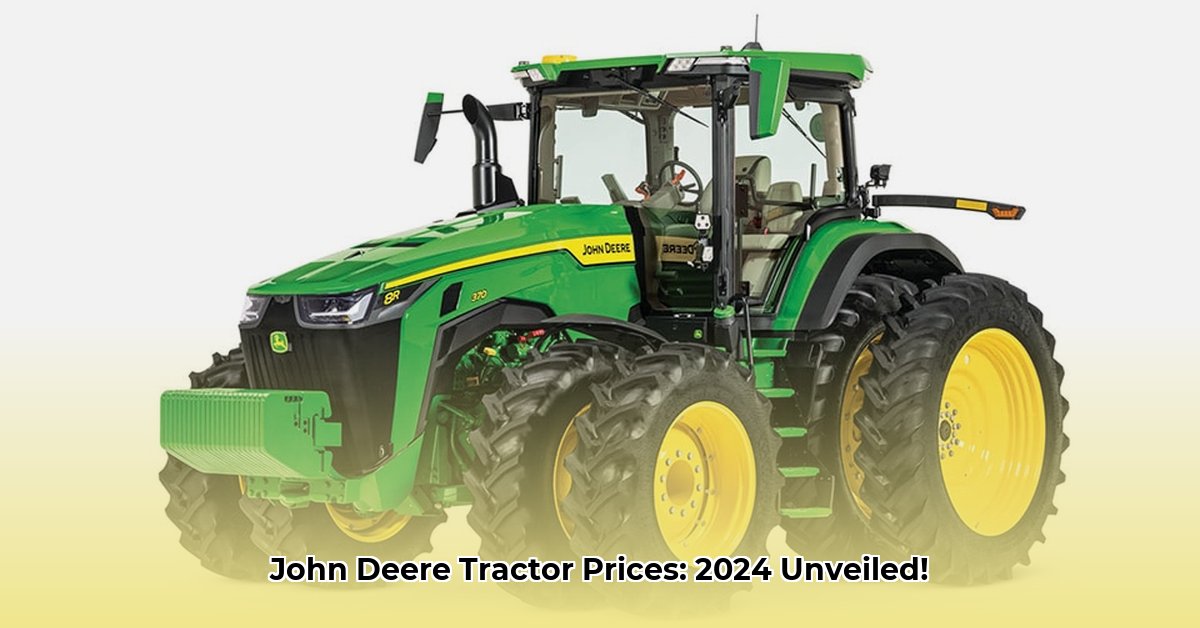
Buying a new John Deere tractor is a significant investment for any farmer, especially those prioritizing sustainable agricultural practices. This guide provides a comprehensive breakdown of costs, helping you choose a tractor that's both economically viable and environmentally responsible. We'll cover various models, financing options, and long-term cost management strategies to ensure you make an informed decision. For detailed specifications, check out the John Deere tractor guide.
Understanding John Deere Tractor Models and Prices
John Deere offers a wide range of tractors, categorized by size and horsepower (HP), directly impacting the price. Smaller tractors (under 30 HP) may start around $20,000, while heavy-duty models (100+ HP) can exceed $200,000. These are broad estimates; the final cost depends on features and options. For example, the John Deere 5E series is suitable for smaller farms and falls into a lower price bracket compared to the more powerful 7R series, ideal for extensive acreage. Always consult your local John Deere dealer for the most current pricing and customized quotes.
Breaking Down the Costs of Tractor Ownership
The initial purchase price is only one component of the overall cost. Consider these factors:
1. Initial Purchase Price: This varies greatly based on model, features, and dealer, ranging from approximately $20,000 to over $200,000.
2. Financing and Interest: Financing options significantly influence the total cost. Longer loan terms result in lower monthly payments but higher overall interest. Secure competitive rates and favorable terms; your credit score plays a role.
3. Insurance: Protecting your investment is vital. Annual insurance costs vary by tractor value and coverage, ranging from a few hundred to several thousand dollars.
4. Maintenance and Repairs: Regular maintenance (oil changes, filter replacements) is crucial. Budget approximately $1,000-$5,000 annually for routine maintenance, and allocate additional funds for unforeseen repairs.
5. Fuel Costs: Fuel consumption depends on tractor size, age, efficiency, and usage intensity. Fuel prices fluctuate, making accurate prediction difficult. Prioritize fuel-efficient models to mitigate this recurring expense.
6. Attachments: Additional implements (plows, mowers, loaders) increase the initial and ongoing costs, ranging from a few hundred to tens of thousands of dollars per attachment.
| Cost Category | Estimated Annual/One-Time Cost (USD) | Notes |
|---|---|---|
| Purchase Price | $20,000 - $200,000+ | Varies based on model and features. |
| Financing (Annual Interest) | Varies greatly | Dependent on loan terms, interest rates, and down payment. |
| Insurance | $500 - $2,000+ | Coverage level impacts premiums. |
| Maintenance & Repairs | $1,000 - $5,000+ | Regular maintenance is key; factor in unexpected repairs. |
| Fuel | Varies greatly | Usage, fuel prices, and tractor fuel efficiency determine costs. |
| Attachments | $1,000 - $10,000+ per attachment | Necessary attachments and their costs depend on farming operations. |
This Total Cost of Ownership (TCO) is crucial for informed decision-making. Isn't it vital to understand the full picture before investing?
Factors Influencing Tractor Cost
Several factors affect the final price:
- Horsepower (HP): Higher HP translates to higher capability and cost.
- Features: Advanced features like GPS guidance and precision farming systems increase the price.
- New vs. Used: Used tractors offer lower initial costs but might require more repairs.
- Technology: Modern, technologically advanced tractors are more expensive than basic models.
Choosing the Right Tractor for Sustainable Farming
Selecting the right tractor aligns with farm size, operations, and sustainability goals. Smaller, fuel-efficient tractors might suit smaller farms, while larger operations might justify more powerful models despite higher initial and fuel costs. Consider soil compaction; heavier tractors can damage soil structure. Explore government programs or subsidies for fuel-efficient or environmentally friendly options.
Financing and Budgeting
Various financing options exist, including dealer financing and government agricultural loan programs. Compare interest rates and loan terms to find the most suitable option. Create a comprehensive budget encompassing all anticipated costs, including unforeseen repairs, and regularly review it.
Long-Term Cost Management
Preventative maintenance is key to minimizing long-term expenses. Regular servicing reduces the likelihood of major breakdowns and extends the tractor's lifespan. Efficient operating practices save fuel and increase overall efficiency.
Conclusion
Purchasing a new John Deere tractor is a major decision. Understanding the various costs, selecting the appropriate model for your needs, and meticulously planning for financing and maintenance are vital steps in making a sound investment that supports the long-term success and sustainability of your farming operation. Remember to consider the Total Cost of Ownership (TCO) and consult your local John Deere dealer for up-to-date pricing and expert advice.